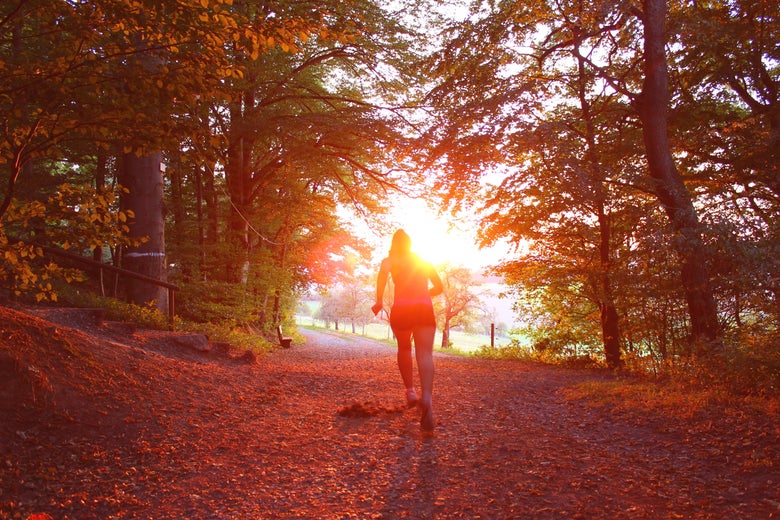
I have always felt a silent solidarity upon encountering another runner on the trail. There’s something about sharing an unspoken purpose, a common goal, an identical ritual, that unifies you with that stranger, a stranger who doesn’t actually know you but somehow understands you. This feeling, for me, has always been driven home by the power of a simple gesture: the runner’s wave.
The beauty of the runner’s wave lies in its simplicity. While all runner’s waves share certain characteristics—small, direct, concise, and encouraging movements—each is somehow distinct, like a signature or fingerprint, holding a part of the runner’s identity and passing that on to someone else. Mine involves eye contact, a short smile, a slow uncurling of the fingers, a small raise of the wrist, and a four- to five-second hold. When I pass the other runner, wave completed, I always feel an extra force driving me forward.
While I’ve always appreciated the runner’s wave, I never knew what that simple gesture meant to me before the COVID-19 pandemic.
I’m on Day 30—wait, sorry, I guess it’s only Day 10—of self-quarantine, which means leaving my house only for my daily runs. (Experts say it’s safe to run solo outside, as long as it’s not prohibited by your local health officials and you’re healthy.) The only in-person interactions I have outside my family are with the strangers I see on the trail or road, our only communication a small hand gesture from more than six feet apart.
Humans are social creatures, and we crave interaction with others. In times like these, even surface-level, safely distanced interactions can mean a lot. In a survey conducted by Mizuno, a sporting goods company, in 2016, 89 percent of runners said they acknowledged others while running, and about a third of those people did so by waving. Similarly, 79 percent said they had “positive feelings about waving.” If we were to redo that survey now, with a new pool of socially starved and stressed athletes, I have full confidence those numbers would be even higher.
The pandemic is affecting all of us, in both vastly different and eerily similar ways. It’s given us big responsibilities—our actions have the ability to save lives by slowing the spread of the disease. In order to get through this thing, we need to work together as a community, but it’s hard to do that when you feel isolated.
In the face of that tension, the power of the runner’s wave is that it reminds me that there are other people out there, people whose minds are saturated with the same worries that fill my own, trying to clear their heads, trying to reach for a sense of normalcy, a routine. It reminds me that the steady drumbeat of someone else’s feet hitting the trail brings them the same peace that my rhythmic strides bring me.
As every news alert brings more bad news, as governments have announced self-quarantine and shelter-in-place orders, and as social distancing has moved most of our human interactions to a computer screen, I think many of us are desperately searching for two things: a sense of control and a sense of community.
A daily run can impose a sense of order and control amid chaos, which is something runners knew long before the COVID-19 pandemic started reshaping our lives in the dramatic, terrifying, and disorienting ways that it has. As Talya Minsberg recently documented for the New York Times, the pandemic—and its closure of gyms, pools, and general life—has incited a “running boom,” with new runners merging into the rivers of old-timers, sharing between them a silent current of mutual encouragement. Minsberg talks about the runner’s nod, which she describes as a step below the wave, which itself is sometimes upsized by the thumbs-up.
For me, the wave is still the most sacred gesture. For me, the wave means “I see you,” during a time when we all want to be seen. It is both a cheer of encouragement and a promise.
The encouragement: You can push through this. The promise: We will push through it together.
Future Tense is a partnership of Slate, New America, and Arizona State University that examines emerging technologies, public policy, and society.
from Slate Magazine https://ift.tt/2UreuMR
via IFTTT
沒有留言:
張貼留言